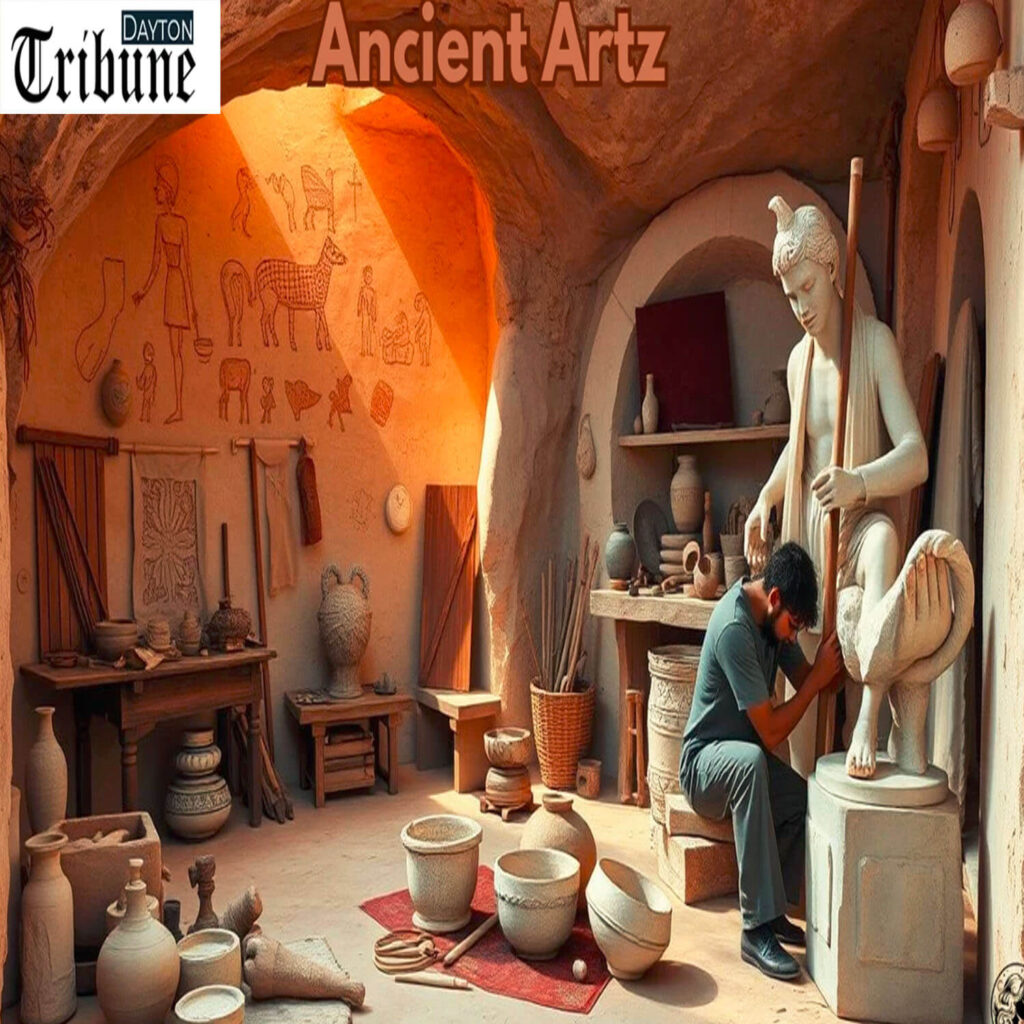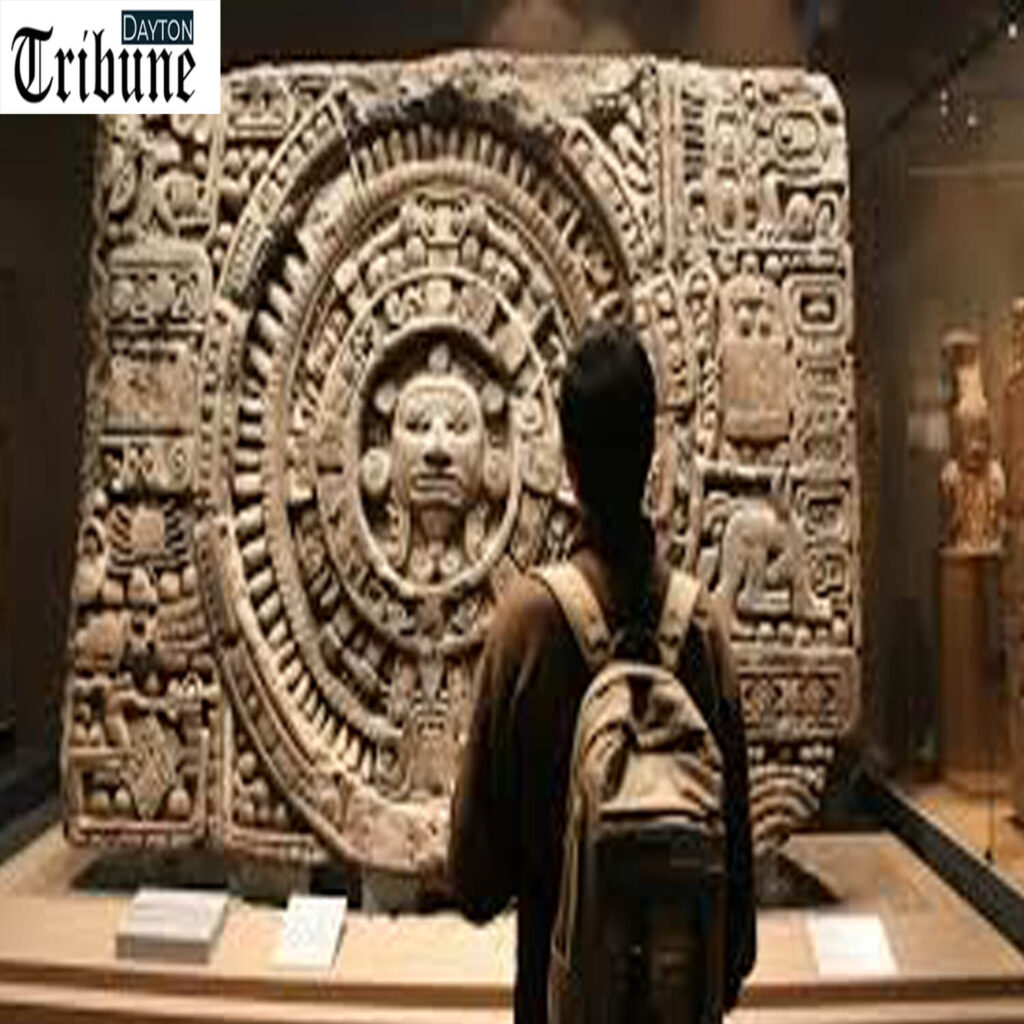Explore the captivating world of ancient artz, uncovering its rich history, cultural significance, and artistic techniques. Discover how civilizations like Egypt, Greece, and Rome shaped the art we admire today.
Ancient artz is a captivating window into the past, offering glimpses of cultures that have shaped human history. From the grand monuments of Egypt to the intricate pottery of the Greeks, these artistic expressions tell stories that transcend time. In this article, we’ll explore the significance, styles, and contributions of various ancient civilizations, uncovering how their artistic legacies continue to influence us today.
What is Ancient artz?
Ancient artz refers to the creative works produced by civilizations before the Middle Ages. This broad category includes sculptures, paintings, pottery, and textiles from regions such as Egypt, Greece, Rome, India, and China. Each culture developed distinct artistic styles that reflected their beliefs, daily lives, and environments.
Why Ancient artz Matters
A Historical Record
Art serves as a crucial historical record, revealing insights about the lives of people in ancient societies. For example, Egyptian tomb paintings depict scenes of daily life and rituals, offering clues about their customs and beliefs about the afterlife. Similarly, Greek pottery often illustrates mythological tales and everyday activities, providing a narrative of their cultural values.
Cultural Identity
Art is a powerful expression of cultural identity. Different civilizations have unique styles that reflect their histories and values. The towering columns of Greek temples, the colorful frescoes of the Minoans, and the intricate carvings on Indian temples all showcase the artistic diversity that characterizes various cultures. Homeworkify is an innovative online platform that helps students tackle their homework challenges across various subjects. With a vast database of solved problems, detailed explanations, and study guides, Homeworkify enhances learning and understanding, making it easier for students to excel in their studies. Whether you’re struggling with math, science, or literature, Homeworkify offers valuable resources to boost your academic performance.

Influence on Modern Art
The impact of Ancient artz is still evident in contemporary practices. Many modern artists draw inspiration from ancient techniques and themes. The revival of classical art during the Renaissance highlights how ancient styles continue to resonate in today’s artistic expressions.
Key Features of Ancient artz
Materials and Techniques
Ancient artists used a variety of materials based on what was available in their regions. Stone, clay, wood, and metal were common choices. For example, Egyptian artists frequently worked with limestone and granite for their monumental sculptures, while Greek potters excelled in creating fine ceramics using both black-figure and red-figure painting techniques.
Symbolism and Meaning
Symbolism plays a vital role in Ancient artz. Many works carry deeper meanings tied to cultural beliefs. In ancient Egypt, colors held specific significance: green symbolized fertility and rebirth, while red could denote chaos. Similarly, the intricate designs of Native American art often conveyed spiritual messages and connections to nature.
Stylistic Variations
Artistic styles varied greatly across cultures. The realism of Greek sculptures contrasts sharply with the stylized forms found in Mesopotamian art. Each style reflects the cultural priorities and artistic techniques of the time, offering a unique perspective on the civilization that produced it.
Major Civilizations and Their Artistic Contributions
Ancient Egypt
Overview
Egyptian art is renowned for its monumental structures and intricate details. This civilization flourished for thousands of years, leaving a rich artistic legacy.
Sculpture and Architecture
Egyptians are known for their impressive sculptures and architecture. The Great Sphinx and the vast statues of pharaohs exemplify their skill and the importance of art in their society. Temples and tombs were adorned with elaborate carvings and reliefs, serving both functional and ceremonial purposes.
Tomb Paintings
Tomb paintings provide a vibrant glimpse into daily life and religious beliefs. These artworks were designed to accompany the deceased in the afterlife, depicting scenes of agriculture, hunting, and offerings to the gods, ensuring a successful journey to the next world.
Ancient Greece
Overview
Greek art is celebrated for its emphasis on beauty, human form, and mythology. The Greeks made significant contributions to various art forms, especially sculpture and pottery.
Pottery
Greek pottery is famous for its detailed narratives. Vases often depicted scenes from mythology and everyday life, showcasing the technical skill of the potters. The black-figure and red-figure techniques allowed artists to create dynamic stories on their works.
Sculpture
Greek sculpture reached remarkable heights during the Classical period. Artists like Phidias and Praxiteles captured the idealized human form, creating lifelike statues that celebrated humanism and proportion. The Parthenon sculptures stand as a testament to their mastery.

Ancient Rome
Overview
Roman art was heavily influenced by Greek art but adapted to suit their own cultural needs. It is known for its practicality and grandeur.
Architecture
Roman architecture is characterized by monumental structures, such as the Colosseum and aqueducts. Their engineering innovations, like the arch and the use of concrete, allowed for impressive designs that have endured through the ages.
Mosaics
Mosaics were a popular art form in Rome, often found in public buildings and private homes. These intricate artworks, made from tiny pieces of stone or glass, depicted scenes from mythology, nature, and daily life, adding color and vibrancy to the spaces they adorned.
Ancient Mesopotamia
Overview
Known as the “Cradle of Civilization,” ancient Mesopotamia is celebrated for its rich artistic heritage.
Ziggurats
Ziggurats were massive stepped structures that served as temples. These monuments were adorned with intricate reliefs and sculptures, demonstrating the architectural skills of the Sumerians and Babylonians.
Cylinder Seals
Cylinder seals were small, engraved objects used to mark ownership and authority. They often depicted mythological figures and provided insight into the culture’s beliefs and practices.
Ancient India
Overview
Ancient Indian art is a fusion of cultural and religious influences, particularly from Hinduism and Buddhism.
Rock-Cut Caves
The rock-cut caves at Ajanta and Ellora showcase exquisite sculptures and frescoes that narrate religious stories, highlighting the artistic skill and devotion of ancient craftsmen.
Temple Architecture
Indian temples are known for their elaborate carvings and sculptures depicting deities and mythological narratives. These structures serve as places of worship and community gathering, reflecting the spiritual life of the culture.
Ancient China
Overview
China’s artistic tradition is rich and varied, deeply intertwined with its philosophical and cultural values.
Calligraphy
Calligraphy is considered one of the highest forms of art in China. The beauty of written characters reflects the skill and cultural significance of this practice, often used in poetry and scholarly works.
Pottery and Porcelain
Chinese pottery, especially during the Han and Tang dynasties, is renowned for its quality and craftsmanship. The development of porcelain during the Tang dynasty marked a significant advancement in ceramic art, leading to creations that are still treasured today.
The Role of Religion in Ancient Art
Spiritual Significance
Religion played a pivotal role in shaping ancient art. Many artworks were created for religious rituals, reflecting the values and beliefs of the society. Elaborate carvings on temples and detailed sculptures of deities showcase the importance of spirituality in these cultures.
Ritual and Ceremony
Art was often intertwined with rituals. Specific artworks were created for ceremonies, such as masks used in Native American rituals or the intricate paintings found in Buddhist temples, serving both aesthetic and spiritual purposes.
Art as Propaganda
Ancient rulers frequently used art to assert their power and authority. Monumental statues and grand public buildings were designed to impress both subjects and foreign visitors, reinforcing the ruler’s status and the strength of their empire.
Preserving Ancient Art
Archaeological Discoveries
Ongoing archaeological excavations continue to uncover ancient artworks, enriching our understanding of past civilizations. Sites like Pompeii and the Valley of the Kings reveal treasures that tell us about ancient lives and cultures.
Restoration Efforts
Preserving ancient art is essential for future generations. Many artifacts face threats from environmental factors and human activity. Conservationists work diligently to protect and restore these significant pieces of history.
Museums and Exhibitions
Museums play a crucial role in preserving ancient art and making it accessible to the public. Exhibitions featuring ancient artworks allow people to appreciate the beauty and significance of these creations, fostering a deeper understanding of our shared heritage.
Conclusion
Ancient art is a rich tapestry of human creativity and cultural expression. It connects us to the past, offering insights into the lives and beliefs of our ancestors. As we explore these artistic treasures, we celebrate the stories they tell and the enduring legacy they leave behind.
By preserving these masterpieces, we ensure that future generations can experience the beauty and significance of ancient art, allowing the voices of the past to resonate through time.
FAQ on Ancient Artz
1. What is Ancient Artz?
Ancient Artz refers to the artistic expressions and cultural artifacts created by ancient civilizations, including sculptures, paintings, pottery, and architecture. It encompasses the rich history and diverse styles from cultures like Egypt, Greece, Rome, India, and China.
2. Why is ancient art important?
Ancient art is crucial for understanding the values, beliefs, and daily lives of past civilizations. It serves as a historical record, reflecting cultural identity and influencing modern artistic practices.
3. What materials were commonly used in ancient art?
Artists in ancient times used various materials, including stone, clay, wood, metal, and textiles. The choice of materials often depended on what was readily available in their environment.
4. How does ancient art differ between cultures?
Each civilization developed its unique style based on cultural values and historical context. For example, Egyptian art is characterized by its symbolic representations and monumental scale, while Greek art emphasizes realism and the human form.
5. What are some famous examples of ancient art?
Notable examples include the Great Pyramids of Giza, the Parthenon in Athens, Roman mosaics, and the rock-cut caves of Ajanta in India. Each of these works showcases the artistry and cultural significance of their respective civilizations.
6. How can I learn more about ancient art?
You can explore ancient art through books, documentaries, museum exhibitions, and online resources. Many museums also offer virtual tours and educational programs focused on ancient art and its impact.
7. Is ancient art still relevant today?
Yes, ancient art remains relevant as it influences contemporary artists and continues to inspire modern design and aesthetics. Understanding ancient art also helps us appreciate the cultural heritage that shapes our world today.
8. What role did religion play in ancient art?
Religion was a significant driving force behind many ancient artworks. Many pieces were created for religious rituals, ceremonies, and to honor deities, reflecting the spiritual beliefs and practices of the cultures.
9. How is ancient art preserved?
Ancient art is preserved through archaeological excavations, conservation efforts, and museum collections. Restoration practices aim to protect and maintain these artworks for future generations.
10. Can I visit places with ancient art?
Absolutely! Many ancient sites, museums, and galleries worldwide showcase ancient art. Notable destinations include the Louvre in Paris, the British Museum in London, and archaeological sites like Pompeii and Machu Picchu.







